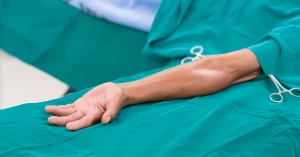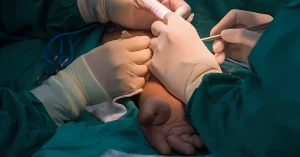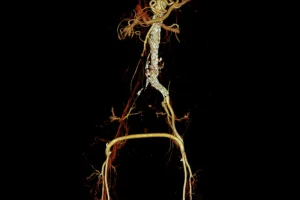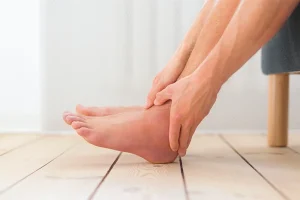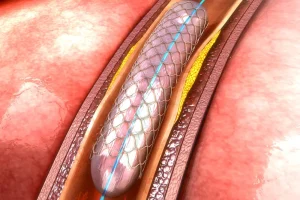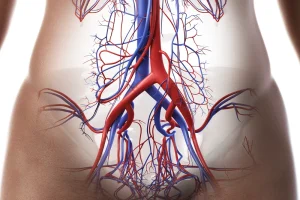Amputation
The last resort in complex and advanced cases
Home » Vascular and Endovascular Surgery » Amputation
Medical Procedures
Vascular Techniques
Endovascular Techniques
Conditions Treated
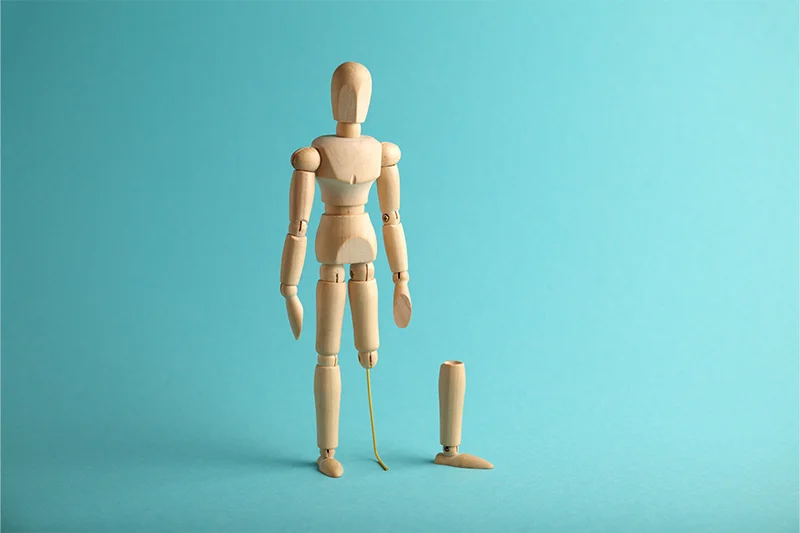
In critical cases, when other treatments fail to resolve severe complications, amputation becomes an extreme but life-saving solution.
Our multidisciplinary team at VenArt Clinic is here to support you, offering specialized care to help you overcome this medical challenge.
Book an Appointment
What does Amputation mean?
Amputation is a medical procedure that involves removing a limb or part of a limb in order to save the patient’s life or prevent serious complications. It is considered an extreme solution, used only when other interventions cannot resolve the patient’s medical problems.
Although it represents a major change in life, amputation can pave the way to a healthier and more comfortable life, especially when followed by well-planned rehabilitation.
When is Amputation necessary?
Amputation is a complex decision that involves a multidisciplinary team consisting of:
- Vascular surgeons;
- Orthopedic doctors;
- Infectious disease specialists;
- Physical therapists and psychologists.
They work together to review all available options and determine whether amputation is the best solution for the patient.
How is the amputation procedure performed?
1. Preoperative evaluation
- Thorough investigations are carried out to determine the patient’s general state of health;
- The type and extent of the vascular or infectious problem is analyzed.
2. Surgical intervention
- The procedure is performed under general or regional anesthesia;
- The surgeon removes the affected tissues, taking care to preserve as much of the healthy structures as possible;
- The area is shaped for optimal adaptation to a possible prosthesis.
3. Postoperative care
- Special attention is paid to infection prevention and pain management;
- The patient receives support to adapt to their new physical condition.
Impact on the patient's life
Amputation involves significant changes, but with adequate support, patients can continue to lead active and fulfilling lives. The process includes:
- Emotional adjustment: Psychological counseling helps patients accept their new reality and regain self-confidence;
- Physical rehabilitation: Exercises and the use of a prosthesis contribute to the patient’s mobility and independence;
- Family support: The family plays an essential role in supporting the patient throughout their recovery.
The benefits of a multidisciplinary approach at the VenArt Clinic
At the VenArt Clinic, we treat each case with empathy and professionalism, offering:
- Top expertise: Our team includes specialists with extensive experience in vascular surgery and rehabilitation;
- Modern technologies: We use state-of-the-art equipment for safe and effective interventions;
- Personalized plan: Each patient receives a treatment plan tailored to their needs;
- Holistic support: We integrate physical, psychological, and social care to ensure a complete recovery.
How to prepare for a possible amputation?
- Communicate openly: Ask the medical team all the questions you need to ask;
- Get informed: Understand what the procedure involves and what rehabilitation options are available;
- Build a rehabilitation plan: Include physical and psychological therapies and, if necessary, the use of a prosthesis.
Rehabilitation and reintegration – Essential steps
Rehabilitation begins immediately after the procedure and includes:
- Stump care: To prevent complications and prepare for the use of a prosthesis;
- Mobility training: Exercises to maintain muscle strength and balance;
- Psychological counseling: Support for adapting to physical and emotional changes;
- Adaptation to the prosthesis: Training in its use and maintenance.
Schedule a consultation at the VenArt Clinic
If you are facing a difficult decision, we invite you to talk to our specialists. At the VenArt Clinic, we are committed to finding the best solution for you, always emphasizing respect for the patient and unconditional support.
We look forward to seeing you – we are here for you every step of the way!
Medical Team
Frequently Asked Questions
How does amputation surgery work?
The procedure is performed under anesthesia (general or regional), with the surgeon removing the affected part of the limb and smoothing the end of the bone to facilitate subsequent prosthetic fitting. The procedure may vary depending on the level of amputation and the cause that led to this decision.
Healing of finger amputation
- Healing takes several weeks, depending on your health and care;
- Preventing infection requires careful hygiene, changing dressings correctly, and following your doctor’s instructions;
- Physical therapy can help maintain mobility and dexterity in the affected area.
Caring for the stump after amputation
- The stump should be cleaned with antiseptic solutions and sterile water, following the doctor’s instructions;
- Normal healing involves reduced pain, absence of inflammation, and abnormal secretions;
- You can use products recommended by your doctor to keep the skin supple and healthy.
Physical therapy after amputation
- Physical therapy helps maintain strength, flexibility, and prepare for a prosthesis;
- Sessions can begin after approval from your doctor, usually a few weeks after surgery;
- The program includes stretching, strength, balance, and coordination exercises.
Recovery after leg amputation
- Recovery can take several months to a year or more, depending on the patient;
- Age, overall health, motivation, and access to therapies influence recovery;
- Preparation for prosthetics includes exercises, muscle strengthening, and balance training.
Caring for a patient with an amputation
- Emotional support, environmental adjustments, and encouraging independence help the patient;
- Nurses monitor healing, provide support, and coordinate with the treatment team;
- Preventing complications involves proper hygiene, regular checkups, and following medical instructions.
Leg amputation surgery
- The surgeon removes the affected segment and prepares the stump for the prosthesis;
- General or regional anesthesia is used, as appropriate;
- Complications may include bleeding, infection, and phantom pain; any suspicious symptoms should be reported.
Amputation stump
- The stump is the remaining part of the limb, which is essential for prosthetics and comfort;
- Gentle massage and proper care can prevent painful scarring;
- Dressings are changed as recommended by the doctor, usually daily.
How long will it take before I can walk or use the prosthesis effectively?
Adaptation to the prosthesis can take from a few weeks to several months, depending on the patient’s needs, level of training, physical therapy, and support from the medical team. Patience and consistency in exercises are essential.
Leg amputation in the elderly
- Older people may experience slower healing and difficulties in adapting;
- Adaptation to the prosthesis is achieved through exercise, therapy, and emotional support;
- Fall prevention involves home modifications, assistive devices, and balance training.



